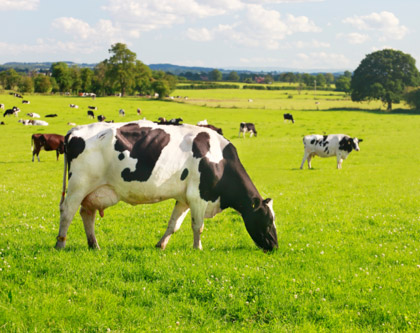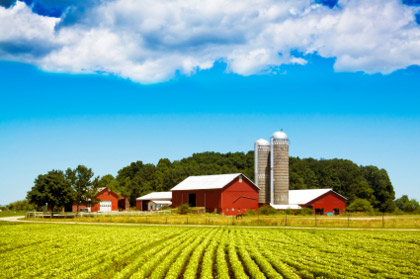The International Impact of the Drought
Our corn crop will not be the only casualty of the drought and high temperatures in the Midwest this summer. Food prices at home and food security abroad are also hanging in the balance. As corn prices hit record highs, the world remembers the 2008 Global Food Crisis that pushed 100 million people into extreme poverty and sparked riots in more than 30 countries. Only two years later the 2010/11 price spikes dropped an additional 44 million people into extreme poverty while high wheat prices that sparked unrest in North Africa escalated into the Arab Spring. Only one year later global food prices are again at record-breaking highs.
As prices rise at home, it is the unemployed and people living on a fixed income that will feel it first. In developing countries, the average person spends between 60 and 80 percent of their income on food, so even small price rises can have an enormous impact. Since prices in local markets have only barely gone down between these back-to-back price spikes, people living in poverty have exhausted their coping mechanisms. During previous price spikes they took on more jobs and more debt, cut education and health expenditures and started to cut meals from their diets. As high global prices today make their way into local markets months from now, we will see this hot summer’s true impact in the face of the hungry, who have never recovered from the previous crises and are running out of options.
We can expect extreme weather events and global food crises to recur more frequently and to cause greater devastation if global leaders continue to respond to systemic problems with half measures, thus failing to get at the core, fundamental drivers of rising food prices and scarcity. While the Secretary of Agriculture prays for rain, policy makers should take this opportunity to assess the root causes of this year’s corn crunch and start making policy changes.
This drought and high temperatures provide a good example of the core drivers of high food prices. Climate scientists say it is difficult to point to any one event as a definitive attribution to climate change. However, the combination of drought and persistent high temperatures make it very likely that this is part of a climate change trend. When you take the long view, a drought, flood or tornado has hit corn country each year for the past several years.
The U.S. is not alone. Around the world, rising temperatures, increased floods from sea level rise and harsher storms are making it harder to grow food. Farmers in other countries are even more dependent on the predictability of weather in order to maintain crops and to provide food for their families. In light of the threat climate change poses to food supply, it is essential to equip smallholder farmers in developing nations with tools and resources they need to shield themselves from disaster.

© iStockphoto.com/R-J-Seymour
As the climate is changing, where and how we grow our food in every region of the world, shrinking available land for agriculture, demand for land and agriculture to meet food, feed and fuel needs is growing. An ever growing global population needs food, and more people are eating meat, which means a growing demand for animal feed and grazing land. More people also mean greater demand for energy, thus compelling countries to create mandates for biofuels.
The process of converting food crops – and the land it is grown on – into fuel crops puts more pressure on increasingly scarce land resources. Countries and companies have begun to compete for use of limited land and water resources leading to a growing number of large-scale land acquisitions. In Africa, more than 60 percent of the land grabs throughout the last ten years were for biofuels.
Greater demand for land and agriculture combined with shrinking amounts of arable land pushes prices up. The fact that our commodities market has become awash with speculators has exacerbated the problem and made food prices more volatile. What might normally be a price rise turns into a price spike, as prices start to come down they can suddenly tank. While high prices can benefit some producers, price volatility is hard on farmers everywhere.
A sustainable future depends on our ability to balance growing demands for energy and fuel with need for access to food, water and a healthy environment. When these demands are not in harmony or when access to one need puts another under threat, it presents serious risks to our global health, economy, security and livelihoods.
Solutions do exist to prevent the next global food crisis, to meet energy demands and to protect the planet at the same time. But false solutions are also out there that can intentionally or unintentionally take us down the wrong path.
Biofuels mandates are an example of a poor policy choice that has had vast and unintended consequences, one of which is the impact on food security. Mandates for biofuels distort the market – keeping demand for fuel crops high come drought, flood or tornado.
Even with the devastation to this year’s corn crop there could still be enough corn to meet our internal demand for food and feed as well as the international demand for U.S. exports. However, the mandate requires that we burn the surviving corn for fuel. As a result, we will go from being the world’s biggest producer and exporter of corn to importing corn from Brazil.
While biofuels are not the answer to our energy crisis, biofuels are not all bad. There are examples of sustainable biofuel production where farmers co-cultivate food and fuel crops so they are mutually reinforcing as opposed to competing for precious land and water resources.
However, turning protected ecosystems or vast tracts of land from food production into industrial fuel production undermines food security and escalates climate change. Mandates that promote using food for fuel, even when supply is tight, will inevitably push up prices. In the immediate term, policy makers should remove the mandate for food-based fuel or at minimum make the mandate more flexible so it is waived down in times of short supply. While changing biofuels policy can happen now, we need deeper systemic change to rebalance our food, fuel and climate policies.

© iStockphoto.com/Maksymowicz|Instead of turning food into fuel, we could feed people, protect the planet and lower our carbon footprint if we got oil out of our food.
Globally, we should be investing in small scale producers, especially women, which are practicing climate resilient sustainable agriculture models that require few, if any, oil-based inputs. When sustainably produced food is eaten locally, or regionally, it also cuts down on oil-based transportation, which reduces energy demand. We should find innovative and alternative public finance for climate adaptation and mitigation strategies. We should stop turning food into fuel or converting land that could be used to grow food crops into fuel crops and instead invest in lowering our energy consumption in wealthy countries and in truly renewable wind and solar energy projects in developing nations.
Positive policy changes to address growing energy demand, climate change and increasing demand for food can and must be mutually reinforcing. Without broader systemic policy changes, we will fail to stop recurrent food crises, millions more will be pushed into hunger, our climate will further degrade, and we will fail to develop sustainable energy solutions.




























